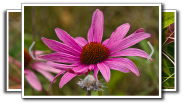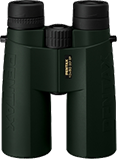drumming sword wolf spider
(Gladicosa gulosa)
Conservation • Description • Habitat • Biology • Distribution • Taxonomy
|
|
||||||||||||||
Description |
Drumming sword wolf spiders are medium-sized wolf spiders. They occur in the United States and southern Canada east of the Great Plains, and there is a separated (disjunct) population in Colorado. They are found in oak, beech, and maple forests and in other woodlands. They are nocturnal, hiding under leaf litter during the day and hunting at night. Females are 7⁄16″ to 9⁄16″ (11 to 14 mm) in length. Males are smaller, ⅜″ to ½″ (10 to 12 mm) in length. The legspan is 1″ to 1⅜″ (25 to 35 mm). The body is light brown, grayish brown, reddish brown, or yellowish brown (pale) with dark brown (dark) and black markings. The front part of the body (cephalothorax) is longer than wide. The upper side (carapace) of the cephalothorax is high, and there is a long, distinct, longitudinal groove in the middle. The lateral margins are smoothly convex, and the rear margin is concave. There is a broad pale stripe in the middle bordered by a broad dark stripe on each side. The dark stripes are crossed by radiating black lines. The face is pale. The eye region is dark. There are eight eyes in two rows of four. The front (anterior) row has four small eyes and is straight or slightly curved forward. The rear (posterior) row has two very large posterior median eyes (PME) and two large posterior lateral eyes (PLE). The PLE are set behind the PME, and some authors describe this arrangement as three rows of eyes. The rear row is about equal in width to the middle row. The PME are closer to the PLE than to each other. The PME and PLE have a layer of reflective tissue internally. This allows the spider to see in relative darkness. It also causes their eyes to shine when hit by the beam of a flashlight. The basal segments of the jaws (chelicerae) are large and powerful. They are dark at the base, becoming paler in the middle, and almost black at the tip. The front and rear margins each have three teeth. The abdomen is egg-shaped and is covered with short hairs. It is pale at the base with a pair of black patches on each side at the base. There are four small but distinct pale spots toward the front and a few scattered small dark spots. The legs are short, stout, spiny, and sparsely hairy. They are pale at the base, becoming dark at the tip. The third segment (femur) of each leg has dark bands on the upper and lateral surfaces. On the male, the chelicerae are pale at the base. Dark markings on the front half of the abdomen form a continuation of the dark stripes on the carapace. The rear of the abdomen does not have the distinct chevrons shared by other members of this genus. The femurs do not have dark bands. |
Size |
Female Body Length: 7⁄16″ to 9⁄16″ (11 to 14 mm) Male Body Length: ⅜″ to ½″ (10 to 12 mm) Legspan: 1″ to 1⅜″ (25 to 35 mm) |
Web |
| No web |
Similar Species |
Habitat |
Oak, beech, and maple forests and other woodlands |
Biology |
Season |
|
Behavior |
The common name of this spider is a reference to male courtship behavior, which usually takes place in the spring. The courtship involves rapid movements of the finger-like sensory mouthparts (palps) and abdomen to produce vibrations and sounds. Upon encountering a female, the male begins drumming his palps alternately against the substrate, creating a distinct purring or humming sound. The palps are raised slightly during this process, and the abdomen is held at an angle, causing its tip to strike the substrate as it twitches vertically. These vibrations are likely perceived by the female and may excite her, similar to the effect of web vibrations in web-building spiders. The sound is produced not solely by drumming but also involves a sound-producing (stridulatory) organ located on the palps. This organ consists of a file on the fifth segment (tibia) and a scraper at the base of the palpal cymbium, with stiff hairs (macrosetae) at the palpal tarsus tip aiding in anchoring the palpus to the substrate. This mechanism facilitates rapid oscillations at the joint, generating the sound. The drumming sounds can be heard from a distance of 10 feet or more, and the behavior includes additional movements such as leg quivering and stroking the female's legs or abdomen during courtship. |
Life Cycle |
|
Food |
|
Distribution |
||
|
Sources Brady, A. R. (1987). Nearctic species of the new wolf spider genus Gladicosa (Araneae: Lycosidae). Psyche, Cambridge 93(3-4, 1986): 285-319. |
|
| 5/10/2025 | ||
Occurrence |
||
|
||
Taxonomy |
|
Class |
Arachnida (arachnids) |
Order |
|
Suborder |
Araneomorphae (typical spiders) |
Infraorder |
Entelegynae |
Zoosection |
RTA clade spiders |
Zoosubsection |
Oval calamistrum clade |
Superfamily |
Lycosoidea (wolf spiders and allies) |
Family |
|
Subfamily |
Lycosinae |
Genus |
Gladicosa |
Genus |
|
Subordinate Taxa |
|
|
|
Synonyms |
|
Gladicosa gulosa Leimonia gulosa Lycosa gulosa Lycosa kochii Lycosa nigraurata Lycosa purcelli Trochosa purcelli Varacosa gulosa |
|
Common Names |
|
drumming sword wolf spider drumming wolf spider |
|
Glossary
Carapace
The hard, upper (dorsal), shell-like covering (exoskeleton) of the body or at least the thorax of many arthropods and of turtles and tortoises. On crustaceans, it covers the cephalothorax. On spiders, the top of the cephalothorax made from a series of fused sclerites.
Chelicerae
The pair of stout mouthparts, corresponding to jaws, in arachnids and other arthropods in the subphylum Chelicerata.
Cephalothorax
The front part of the body of various arthropods, composed of the head region and the thoracic area fused together. Eyes, legs, and antennae are attached to this part.
Femur
On insects and arachnids, the third, largest, most robust segment of the leg, coming immediately before the tibia. On humans, the thigh bone.
Palp
Short for pedipalp. A segmented, finger-like process of an arthropod; one is attached to each maxilla and two are attached to the labium. They function as sense organs in spiders and insects, and as weapons in scorpions. Plural: palpi or palps.
Tibia
The fourth segment of an insect leg, after the femur and before the tarsus (foot). The fifth segment of a spider leg or palp. Plural: tibiae.
Visitor Photos |
||
Share your photo of this arachnid. |
||
This button not working for you? |
||
Greg Watson |
 |
I noticed that you don’t have a picture of a Drumming Sword Wolf Spider, Gladicosa gulosa, in your list. I took the picture on the Dakota Trail in Whitewater State Park this past Wednesday. |
MinnesotaSeasons.com Photos |
||
|
||
|
||

Slideshows |
|

Visitor Videos |
||
Share your video of this arachnid. |
||
This button not working for you? |
||
|
Other Videos |
||
Spider's Creepy Mating 'Purr' Recorded by Researchers |
About
Jun 1, 2015 Male wolf spiders (Gladicosa gulosa) use vibration to communicate. Unlike other wolf spider species, they create airborne sounds that are audible, but females can only "hear" the vibrations when they resonate on a dry leaf. |

Visitor Sightings |
||
Report a sighting of this arachnid. |
||
This button not working for you? |
||
MinnesotaSeasons.com Sightings |
||
|

|
Created: 5/10/2025 Last Updated: © MinnesotaSeasons.com. All rights reserved. |

